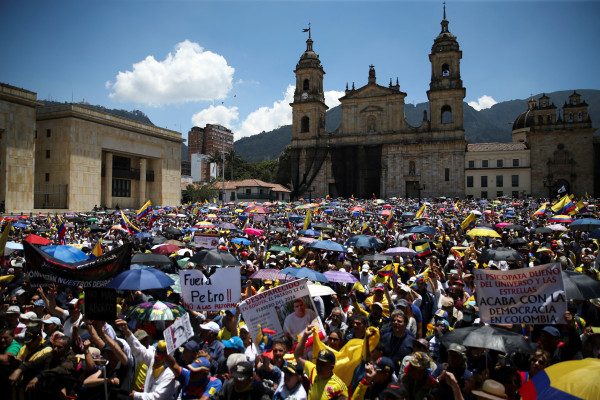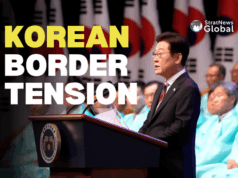Colombia’s government has officially requested entry into the New Development Bank of the trade bloc BRICS. Acting Minister of Trade, Industry, and Tourism, Cielo Rusinque, announced this at a forum in Bogotá attended by ambassadors from BRICS countries.
The BRICS bank was established in 2014 as an alternative to traditional investment banks, primarily those from the United States.
What is the significance?
In an exclusive conversation with StratNewsGlobal, Mariana Pacheco, former Colombian ambassador to India, says, “This move is part of Colombia’s strategy to diversify its trading partners beyond the United States, especially given the uncertainty caused by President Trump’s tariff policies.
“Recently, the International Monetary Fund (IMF) stated that Colombia’s continued eligibility for the IMF’s Flexible Credit Line depends on completing ongoing consultations and a mid-term review.”
In her view, this is due to concerns about increased deficits and public debt under President Petro’s macroeconomic policies, reflecting worries about rising international uncertainties.
“Joining the BRICS Development Bank would allow Colombia to seek investment loans outside institutions like the IMF or the Inter-American Development Bank (IADB),” Pacheco said. “This is also part of Colombia’s strategic approach to the BRICS+ bloc, aiming to integrate into the new era of international economic relations based on South-South cooperation and building new trade and investment alliances.”
Entering the BRICS bank could open significant opportunities for Colombia, diversifying its markets and building strategic alliances with BRICS countries, which are some of the most dynamic economies of this century.
In her opinion, “This alignment also has geopolitical implications, signalling Colombia’s desire to diversify its alliances and reduce dependence on traditional Western powers, especially the United States. Such a shift could enhance Colombia’s leverage on the global stage but may also pose challenges vis-à-vis this new world order.”
Joining the BRICS Development Bank would strengthen economic ties with Brazil, Russia, India, China, and South Africa—five of the world’s largest and most influential emerging markets.
“Access to the financial resources and development projects managed by the BRICS bank could provide Colombia with much-needed infrastructure investments, fostering economic growth and development. Enhanced infrastructure can drive productivity, improve connectivity, and foster regional economic integration,” she said.
How will this help Colombia?
“Currently, 30% of Colombia’s economy trades with the United States. Closer economic relations with BRICS countries would mitigate risks associated with over-dependence on traditional Western markets and lead to a more balanced and resilient economic model,” she argued.
But she also noted that “While the benefits are substantial, Colombia’s application for BRICS Development Bank membership may face challenges. Integrating into the BRICS framework will require navigating complex political and economic landscapes. There also may be concerns about dependency on BRICS nations, especially China, and the potential influence they could wield over Colombia’s domestic policies.”





